What Is a Good Conversion Rate? A Practical Guide for Business Owners
- Chase McGowan

- Oct 20
- 13 min read
What's a “good” conversion rate? The honest answer from a specialist is: it depends entirely on your business.
Trying to pin down a single magic number is one of the most common traps in digital marketing. A 1% conversion rate might sound low, but if you're selling $20,000 B2B software packages, that's a massive win. On the flip side, a 10% rate for a free newsletter sign-up could be a sign that something is seriously wrong. The number itself is just a number; the real meaning comes from the context of your business.
Your True Conversion Rate Benchmark
Forget what you've heard about universal averages. Chasing a generic industry benchmark is a fool's errand that wastes time and money. I've seen too many bloated agencies point to vague industry stats to make their own mediocre performance look good. They use these irrelevant numbers to justify their high fees while your results stay flat.
Your business isn't an "average." You have your own unique offers, a specific type of customer, and your own profit margins. The real question isn't, "What's a good conversion rate?" The question you should be asking is, "What's a good conversion rate for me?" The answer is found by looking at your own data and your direct competitors, not some meaningless global report. This is where an experienced, individual consultant shines—by focusing on what moves the needle for your business, not just applying a one-size-fits-all agency template.
Finding Your Real Starting Point
So, where do you begin? Instead of getting fixated on those broad industry numbers, let's focus on the metrics that actually impact your bottom line. These factors give you the context you need to define what success truly looks for you.
Your Business Model: Think about it. A local pizza shop is all about high-volume, low-cost conversions like online orders. A law firm, however, needs just a few high-value conversions—like qualified case inquiries—to have a great month. Their goals are completely different, and a cookie-cutter agency approach will fail both of them.
Traffic Quality and Intent: Not all visitors are created equal. Someone who typed your brand name into Google is ready to buy. They're worlds apart from someone who casually clicked a broad ad on social media while scrolling. An expert focuses on attracting high-intent traffic, not just cheap clicks.
Your Own Past Performance: This is your most important benchmark. The real goal is simple: continuous improvement. Are you doing better this month than you were last month?
This infographic really drives home the point that context is everything.
As you can see, a single number tells you almost nothing without understanding the business factors behind it.
While general benchmarks can offer a loose frame of reference, they should never be your primary target. For instance, recent Google Ads data suggests an average conversion rate of around 7.52%, but that number hides some wild variations.
To give you a clearer picture, here's a quick look at how much conversion rates can differ from one industry to another.
Sample Conversion Rate Benchmarks by Industry
Industry Sector | Average Google Ads Conversion Rate |
|---|---|
Automotive Repair | 14.77% |
Legal Services | 9.87% |
Home Services | 9.81% |
Finance & Insurance | 2.53% |
Furniture | 2.37% |
See the difference? Industries that solve urgent problems, like Automotive Repair, can see rates well over 14%. Meanwhile, sectors with longer sales cycles, like Finance, often hover below 3%. An agency might tell you 2% is "good" for finance, but an individual expert will ask why it isn't 4% and then build a plan to get you there.
Of course, before you can even begin this journey of improvement, you need to be absolutely sure you can trust your data. That starts with learning how to fix your Google Ads conversion tracking. It’s a foundational step that’s absolutely critical for setting realistic goals and accurately measuring what works.
The Agency Problem and Why Your Results Are Flatlining
Do you ever feel like you're just throwing money at your ad campaigns with nothing to show for it? It’s a common frustration. Many businesses get stuck in a rut, watching their conversion rates stall out while a hefty agency invoice lands in their inbox every single month.
The problem often lies with the very team you hired to fix it: the big, bloated marketing agency.
Too often, these agencies take a cookie-cutter approach. They slot your business into a pre-built template, hand your account off to a junior manager who’s probably juggling way too many clients, and focus more on hitting their billable hours than hitting your growth targets. This assembly-line model almost always results in generic strategies that miss what makes your business unique.
The Generalist vs. The Specialist
Here’s an analogy I like to use: if you needed complex heart surgery, you wouldn't go to your family doctor. You'd find a cardiac surgeon—a specialist with years of focused experience who knows exactly what to look for and what to do.
The same logic applies perfectly to Google Ads. A big, generalist agency is the family doctor, offering basic checkups and advice that’s so broad it helps no one. They're designed to serve everyone, which means they specialize in nothing.
A specialized consultant, on the other hand, is the surgeon. My value is in diagnosing the deep, underlying issues that those cookie-cutter agency reports completely miss—things like mismatched keyword intent, a messy campaign structure, or a broken user journey between the ad click and the landing page.
This difference is everything when you ask, what is a good conversion rate? An agency might point to some industry-wide average to make you feel okay about your 2% rate, calling it "good enough." As a specialist, I want to know why it isn't 4%, and I’ll dig in to find the exact friction points that are bleeding customers and cash.
How to Move Beyond "Good Enough"
The traditional agency model is often built to maintain the status quo. As long as the checks keep clearing, they’ll keep running the same old playbook. The result? Your performance flatlines. Your conversion rate gets stuck in that mediocre zone because no one is dedicated enough to do the hard work—the constant testing and deep analysis—that it takes to achieve a breakthrough.
This is where working with a dedicated expert completely changes the dynamic:
Deep Dives, Not Surface Scans: I don't just fiddle with ad copy. I audit your entire funnel, from the ad to the landing page to the final thank you page. I’m scrutinizing the user experience, your offer, and your targeting with a fine-tooth comb.
Direct Accountability: You’re not talking to a revolving door of account managers. You’re working directly with me, a single point of contact who is personally invested in seeing you win. No red tape, no excuses.
Custom Strategy, Not a Template: As an individual consultant, I build your strategy from scratch. It’s designed around your specific business goals, your profit margins, and how your customers actually behave.
This hands-on, focused approach is how you break free from stagnant results and finally get a real, tangible return on your ad spend. It shifts the entire conversation from just trying to meet a generic benchmark to systematically blowing past it.
Key Factors That Actually Influence Conversions
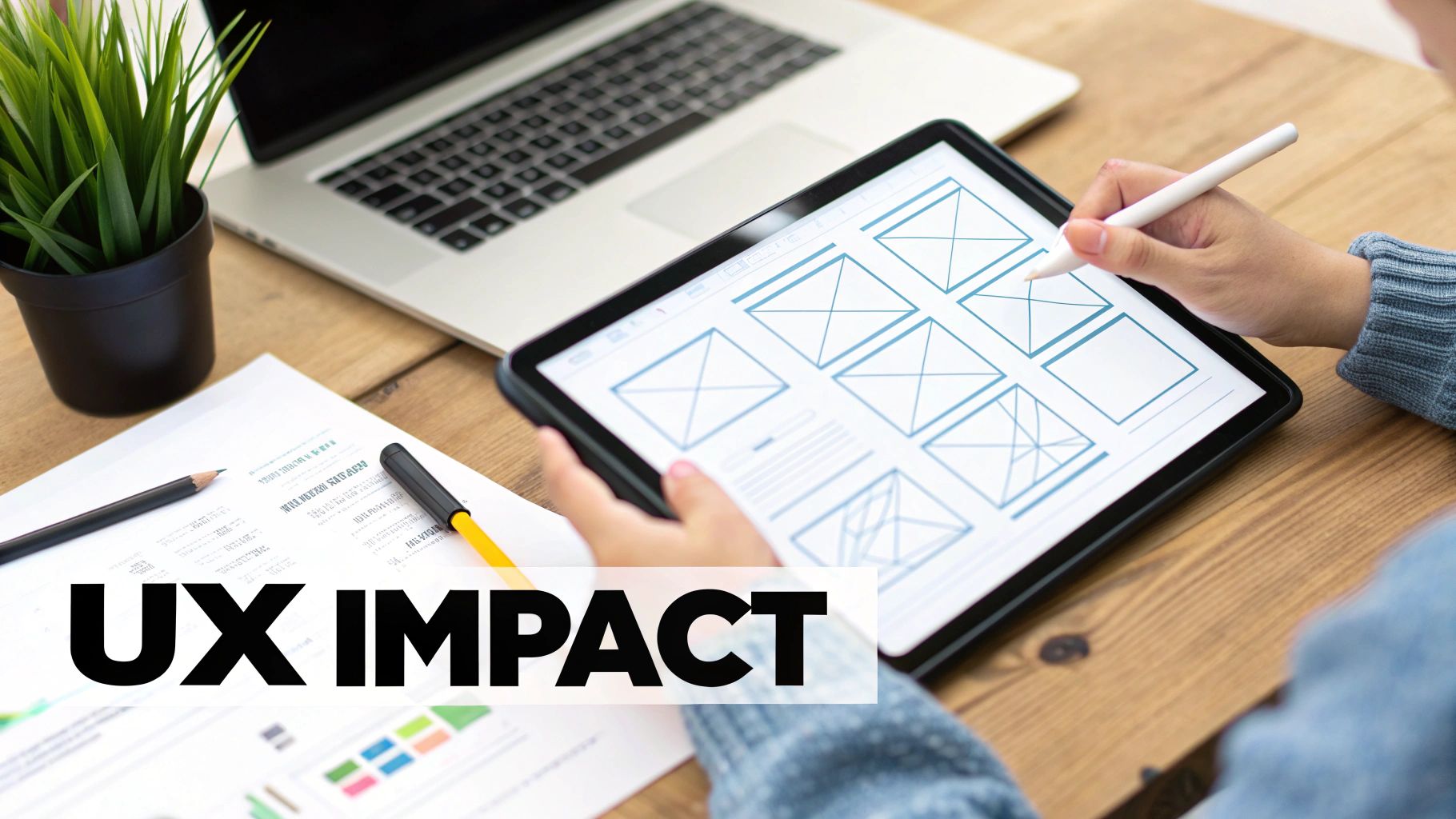
Your conversion rate isn't a starting point; it's a final grade. It’s the direct result of a dozen interconnected factors that those generic agency reports almost always ignore. They’ll tweak your ad copy and call it a day, but that’s like trying to fix a car engine by changing the air freshener.
To truly understand what is a good conversion rate, you have to first get a handle on all the variables that produce it. This is where my focus as an expert consultant provides an immediate advantage. Instead of obsessing over surface-level metrics, I dig into the foundational pillars that actually move the needle.
The Holistic View An Agency Misses
Big agencies often operate in silos. The ad team writes the ads, a different team might touch the landing page, and neither talks to the people actually closing the deals. As a dedicated consultant, I look at the entire customer journey as one continuous experience.
This perspective quickly reveals the friction points that kill your conversions long before a customer even thinks about clicking "buy." My real work involves a deep-dive analysis of four critical areas:
Traffic Quality and Intent: Are your ads attracting people who are actively searching for your solution, or are you just getting casual browsers? I refine targeting to capture users who are ready to act, not just look.
Landing Page Experience (UX): Does your landing page deliver exactly what the ad promised? Is it fast, mobile-friendly, and easy to navigate? A clunky or confusing page is the number one cause of wasted ad spend.
Competitiveness of Your Offer: How does your price, value, and guarantee stack up against the competition? As an outside expert, I can provide an objective look at your offer to make it far more compelling to your target audience.
Trust Signals: Are you using reviews, testimonials, security badges, and clear contact information? These elements build the confidence someone needs to pull out their wallet.
A high-performing campaign isn't just about a clever headline. It's about creating a seamless, trustworthy path from the ad click to the final "thank you" page. This is the holistic, hands-on optimization that sets an individual expert apart from a disconnected agency team.
From Diagnosis to Optimization
Identifying these factors is only half the battle. The real value comes from systematic testing and refinement. As an individual consultant, I personally oversee A/B tests on your landing pages, experiment with different offers, and analyze user behavior to make decisions backed by real data.
For example, knowing that desktop users convert at around 4.8% while mobile users are closer to 2.9%—despite mobile driving 73% of traffic—is a massive insight. This data points to a huge opportunity to optimize the mobile checkout process, an area many agencies completely overlook.
Similarly, understanding that personal care products convert at 6.8% while luxury goods often sit below 1% helps set realistic expectations and informs a smarter strategy. You can explore more benchmarks to see how your own product category stacks up.
This deep, hands-on work is what drives real, sustainable growth. It moves you beyond generic best practices and into a strategy built specifically for your business. For a deeper dive into actionable strategies and a comprehensive look at these factors, explore this practical guide to improving ecommerce conversion rates.
How Marketing Channels Shape Conversion Goals
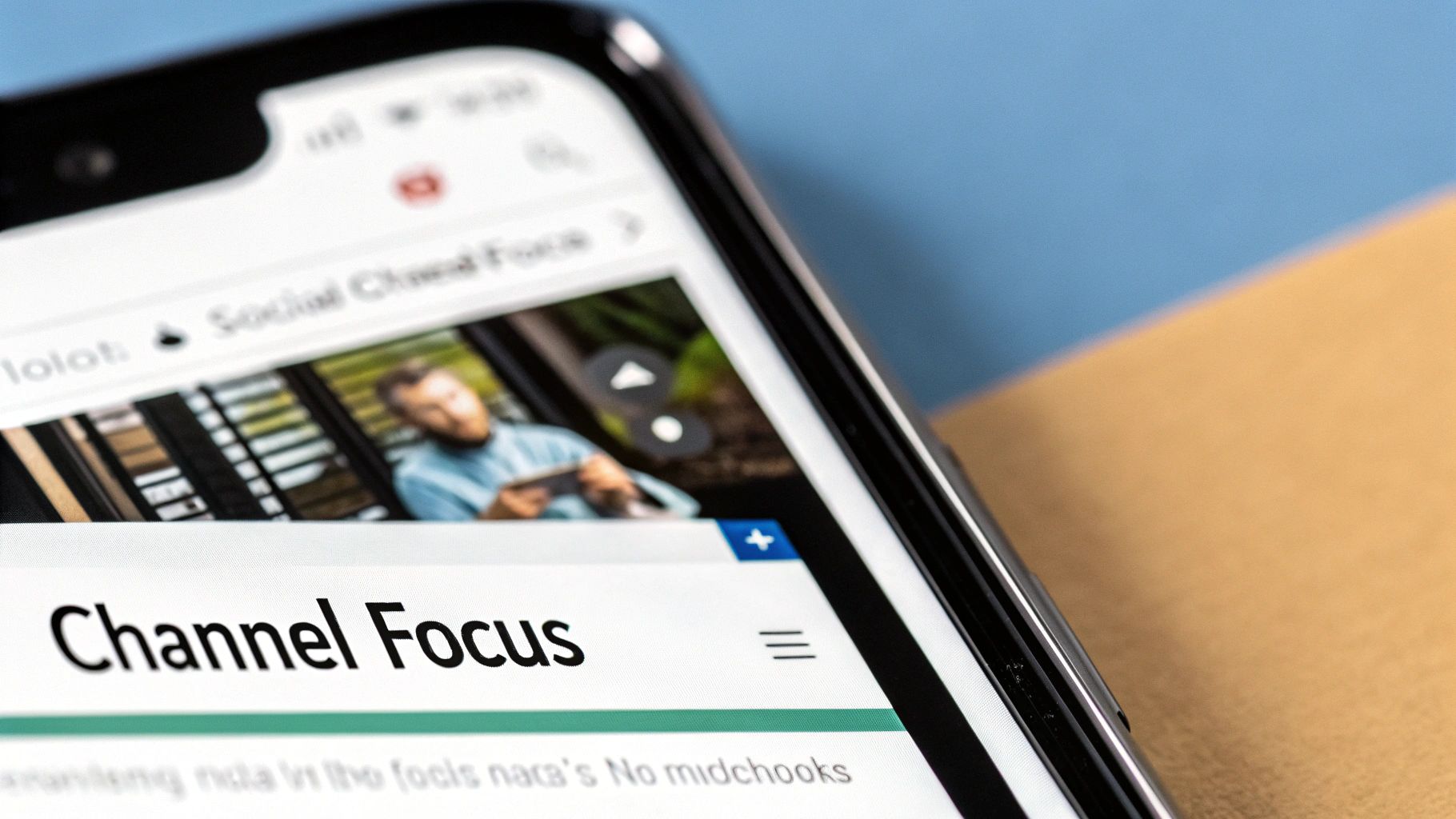
If you're expecting a TikTok ad and a Google Search campaign to deliver the same conversion rate, you're setting yourself up for disappointment. It's one of the most common—and costly—mistakes I see when I'm auditing accounts run by big, overworked agencies. Each marketing channel is its own little universe, with users who have completely different mindsets and motivations.
Think about two people for a second.
One of them is on Google, frantically typing "emergency plumber near me." They have a burst pipe, water is everywhere, and they need a solution right now. Their intent to buy is through the roof. A good ad in this scenario should convert pretty well.
The other person is just chilling, scrolling through Instagram. Your ad pops up between a video of their friend's new puppy and a recipe they might try later. They weren't looking for your product. You just interrupted their day, hoping to catch their eye.
Intent Is Everything
These two scenarios couldn't be more different, and your idea of what is a good conversion rate has to account for that. A 1% conversion rate from that Instagram ad might actually be a huge win—you just created a new lead out of thin air. But a 1% conversion rate from a search campaign where someone specifically Googled your brand name? That's a full-blown emergency.
Understanding this gap in user intent is where a specialist really proves their worth. Instead of slapping a single, generic benchmark on everything, an expert like myself knows how to tailor the strategy and the performance goals to the specific platform.
This kind of detailed approach keeps you from making bad decisions based on good data. You won't accidentally pull the plug on a great Facebook awareness campaign just because its conversion rate looks low next to your high-intent search ads. And you definitely won't let a poorly performing search campaign get a pass just because it’s hitting some "industry average" an agency showed you.
Channel-Specific Benchmarks
Different channels are just built to deliver different results. For example, it’s not unusual for email marketing to see an average conversion rate over 10.3% because you're talking to a warm audience that already knows who you are. On the flip side, paid search ads, even though they target users with clear intent, often hover between 2% and 3%. This just goes to show how much channel selection and proper optimization matter.
A generic agency often doesn't have the specialized knowledge to navigate these nuances. They might run the same creative and send traffic to the same landing page for both search and display ads, completely ignoring the massive difference in user psychology. If you want to dive deeper into that, we have a whole guide on search ads vs. display ads.
At the end of the day, a "good" conversion rate is one that makes sense for the channel, the audience's mindset, and what you’re trying to achieve with that specific campaign. My job is to squeeze the best possible performance out of each unique context, making sure every dollar you spend is working as hard as it can.
A Personalized Path to Higher Conversions
Boosting your conversion rate isn't about randomly tweaking bids and crossing your fingers. It demands a strategy built just for you—one that considers your specific business goals, profit margins, and how your customers actually behave. This is where a dedicated consultant brings a level of focus that larger, impersonal agencies just can't offer.
The process goes way beyond the cookie-cutter reports and surface-level tweaks that keep so many businesses stuck. It kicks off with a deep-dive audit, the kind a junior account manager at a big agency would never have the time or experience to perform. This isn't just a quick look at click-through rates; it’s a forensic investigation of your entire Google Ads account, your competitors' strategies, and the user's journey on your landing pages.
This initial analysis is what lays the groundwork for a custom optimization roadmap—a clear, actionable plan built to get results.
My Methodology as Your Consultant
A personalized strategy isn’t a vague promise; it’s a structured process. As your one-on-one expert, I will methodically comb through your account to find every opportunity, making sure every dollar you spend is working as hard as it can. My approach usually involves a few key stages:
Campaign Restructuring: So many ad accounts are a tangled mess of mismatched keywords and ad groups. I will rebuild your campaigns with a tight, logical structure that directly improves your Quality Score and lowers your cost-per-click.
Advanced Strategy Implementation: We'll push beyond basic search campaigns. This means setting up and managing more complex tools, like Performance Max campaigns with carefully segmented asset groups, to ensure your ads hit the right audience with the right message.
Landing Page and Offer Consulting: The job isn't done when someone clicks your ad. I provide direct, honest feedback on your landing page copy, calls-to-action, and overall offer to eliminate friction and make saying "yes" an easy choice for your visitors.
The real advantage is having a single, accountable expert who is personally invested in your success. There’s no passing the buck or hiding behind corporate jargon—just transparent, data-driven work focused on your bottom line.
The Agency Contrast
This is a world away from the typical agency experience, where your account is often just one of dozens juggled by an overworked team. You get generic monthly reports filled with vanity metrics but little real insight into what’s actually moving the needle. The focus tends to be on maintaining the account, not aggressively pushing for better results.
As an individual expert, my goal is to become a true extension of your team. That means no generic advice and no one-size-fits-all solutions—just a relentless focus on optimization. To actively improve your conversion rates, it’s essential to implement robust Conversion Rate Optimization Strategies. This expert-led approach ensures that every change is a deliberate step toward achieving a higher, more profitable conversion rate.
This level of detailed work is also backed by proven methodologies. If you're looking for more ideas, you can explore our list of 9 conversion rate optimization best practices for 2025 to see the kinds of tactics we deploy. Ultimately, a personalized path is about replacing guesswork with a proven system for growth.
Got Questions About Conversion Rates? Let's Clear Things Up.
Diving into conversion rates can feel a bit like falling down a rabbit hole. Let's tackle some of the most common questions that pop up. My goal here is to give you straight answers, the kind you won't get from a generic agency report.
How Long Should I Wait Before Judging My Conversion Rate?
This is a big one. It's tempting to check your campaign performance after a day or two and start making changes, but that's a classic rookie mistake. In the world of Google Ads, patience isn't just a virtue—it's a requirement for success.
You need to let enough data roll in for the numbers to mean something. A good rule of thumb is to wait until you have at least 100 conversions for a campaign. At the absolute bare minimum, you need a few hundred clicks to even begin seeing a trend.
A large agency might feel pressured to make quick changes on a small data set just to look busy. As an experienced pro, I know better. I wait for real patterns to emerge, which stops us from making knee-jerk reactions that could kill a campaign right before it starts working.
What's the Difference Between a Micro and a Macro Conversion?
Understanding this is key to seeing the whole picture of your campaign's performance.
Macro Conversions: These are the big-ticket items, your main business goals. We're talking about completed sales, signed contracts, or a high-quality lead filling out your form. These are the actions that directly pad your bottom line.
Micro Conversions: Think of these as important steps along the way. They're smaller actions that show a user is interested and moving in the right direction. Things like adding a product to a cart, downloading a guide, or watching a key video all fall into this bucket.
Many agencies only focus on and report the macro conversions, but that's like only reading the last chapter of a book. A true specialist tracks both. I use micro-conversion data to understand the entire customer journey and fine-tune every step, not just the final sale.
Understanding the full conversion path—from the first click to the final sale—is what separates a surface-level strategy from a deeply effective one. It’s about seeing the entire story your data is telling, not just the last chapter.
Can I Have a High Conversion Rate and Still Lose Money?
You absolutely can, and it's a dangerous trap to fall into.
Let's say you're selling a $10 product. Your ads are bringing in sales like crazy, leading to a fantastic 15% conversion rate. The problem? It costs you $12 in ad spend to get each sale. You're actually losing $2 on every single transaction.
This happens all the time when the focus is on vanity metrics instead of what really counts: profit. This is a classic mistake made by junior agency managers who are judged on clicks and conversions, not your profitability.
As an expert, I zero in on metrics like Return On Ad Spend (ROAS) and Cost Per Acquisition (CPA), always viewed in the context of your actual profit margins. The goal isn't just getting you more conversions; it's about getting you profitable conversions. A good conversion rate is one that makes your business stronger, period.
Ready to stop chasing generic benchmarks and start building a profitable, personalized strategy? At Come Together Media LLC, I provide the one-on-one expertise needed to uncover what a good conversion rate means for your business and then systematically achieve it. Book your free consultation today!




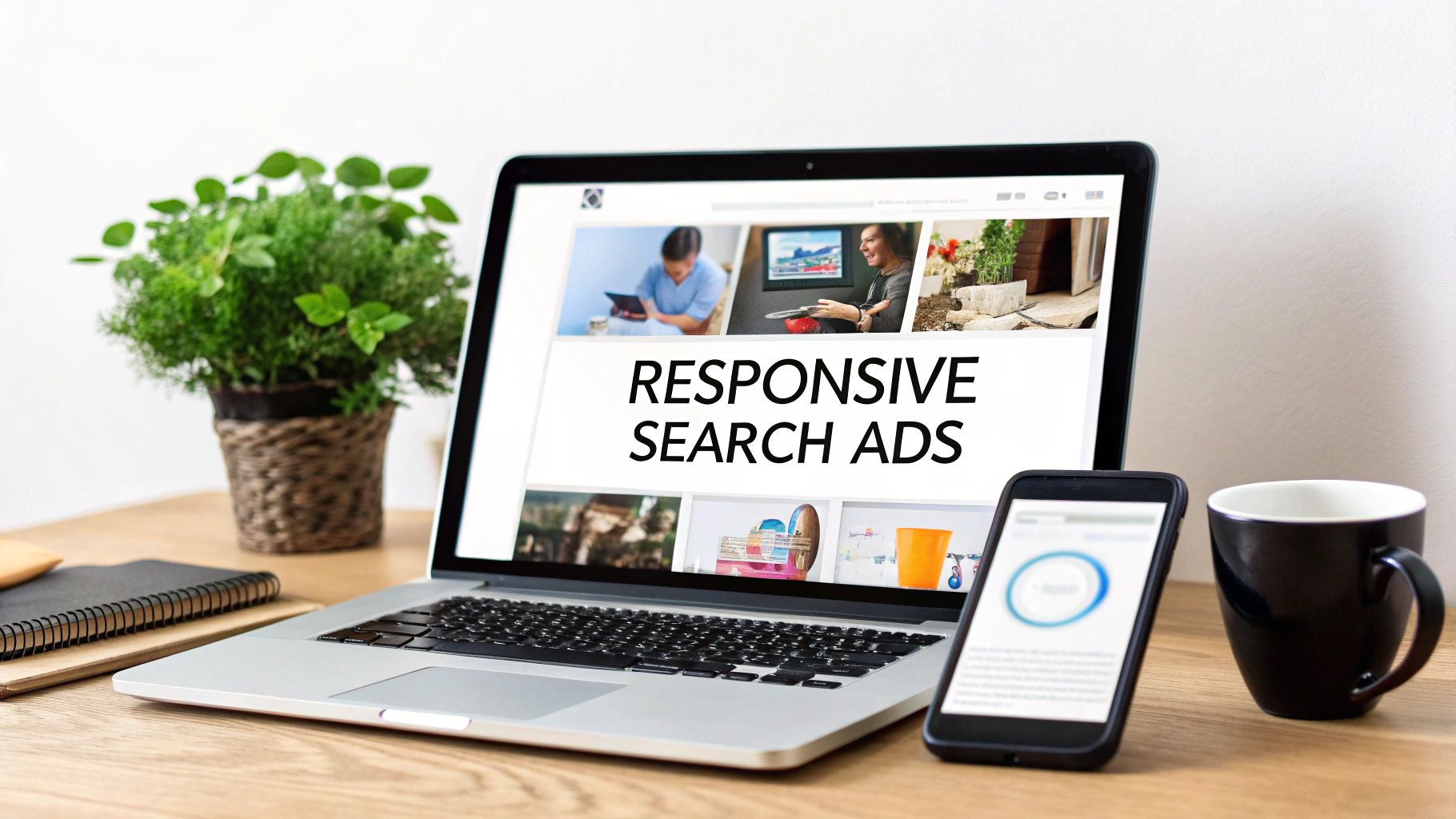
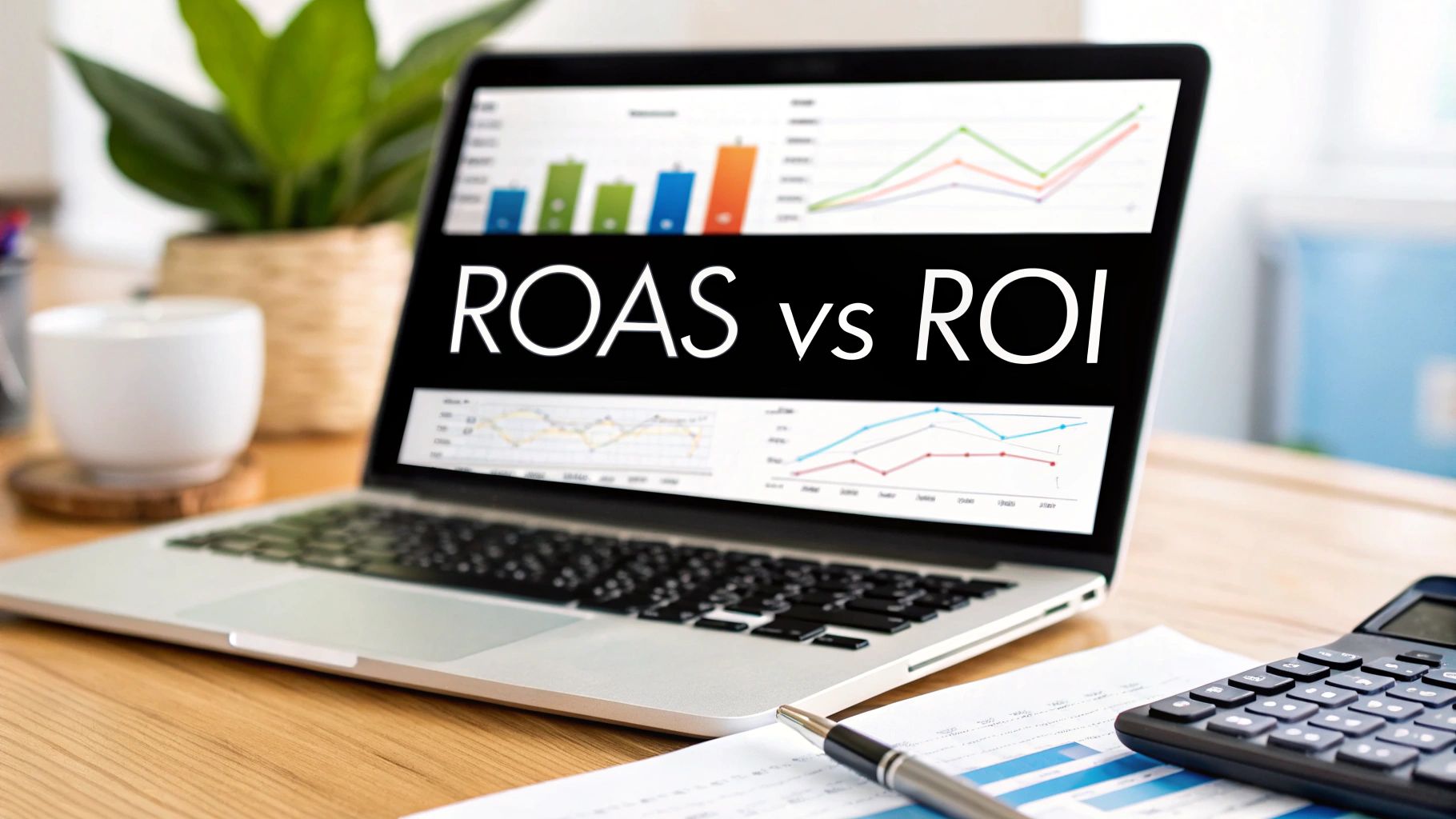
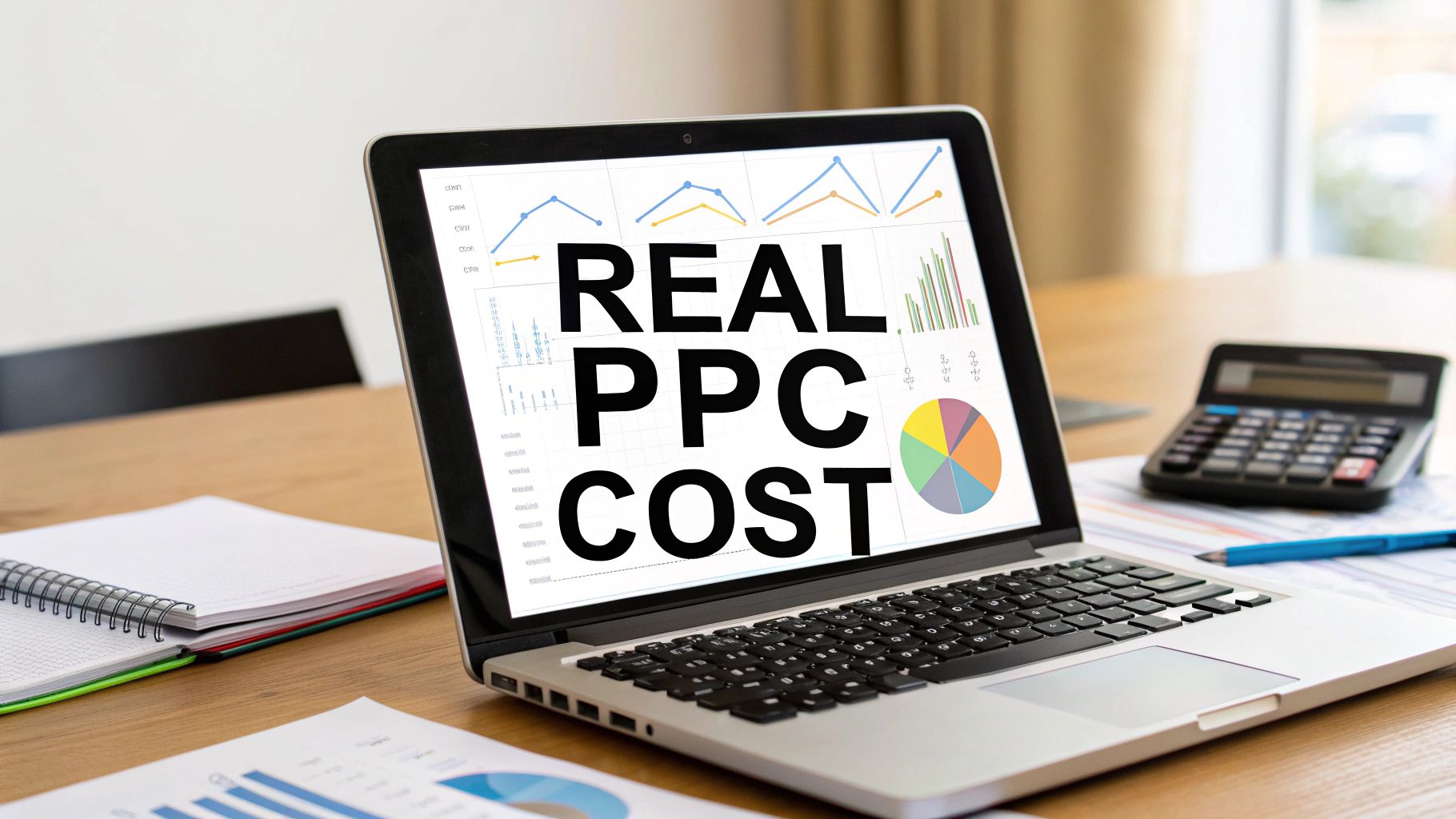
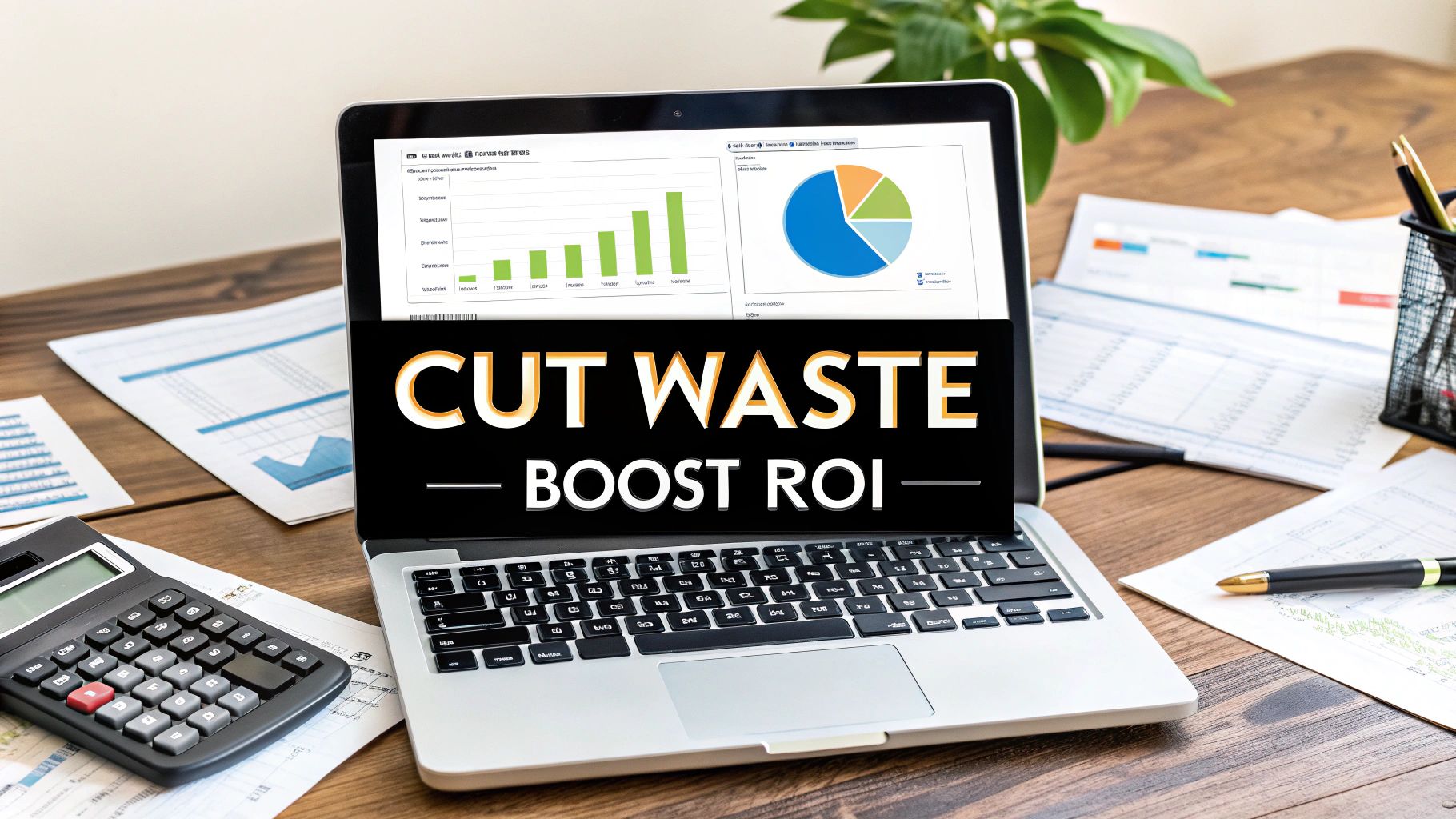
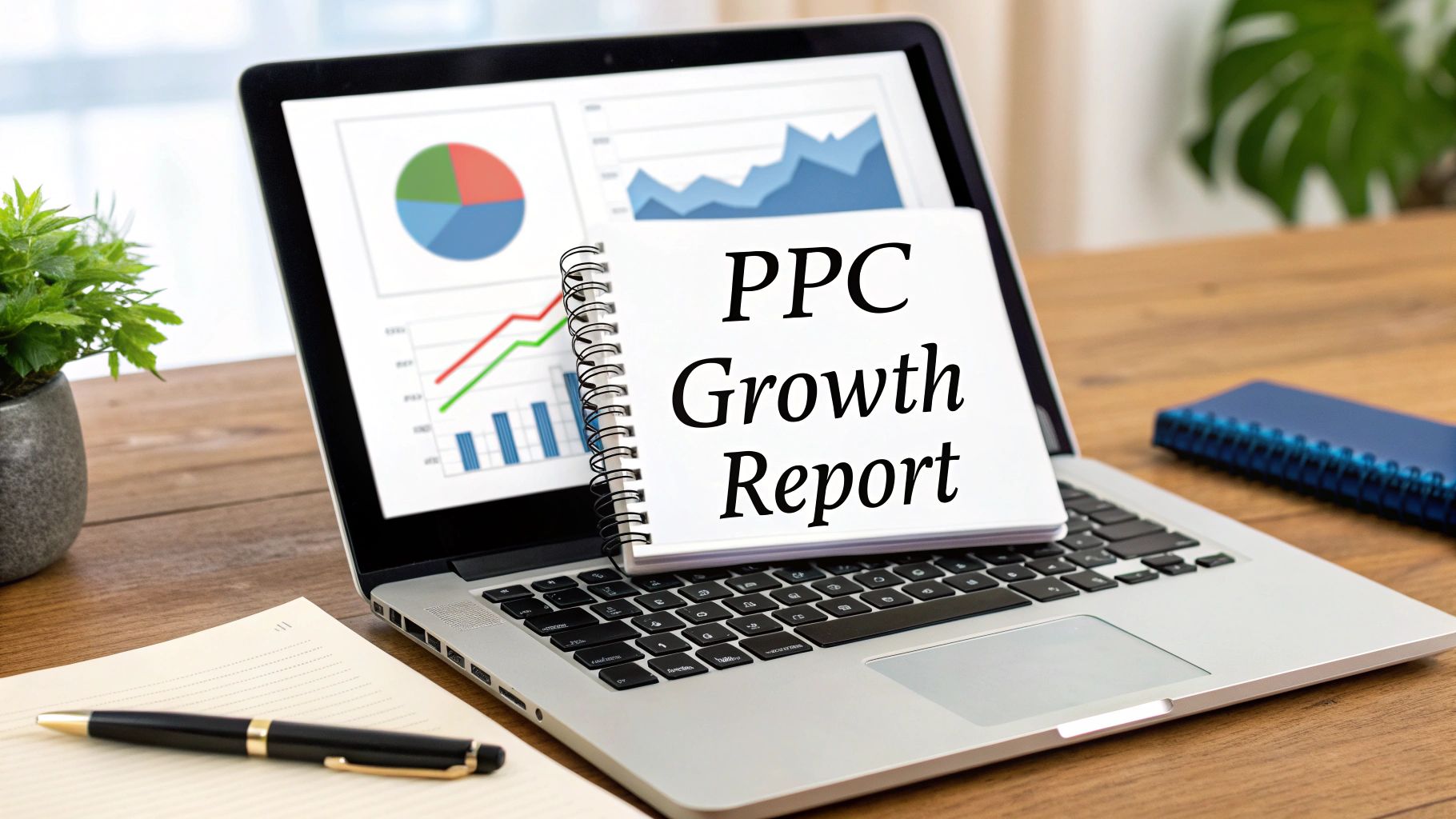
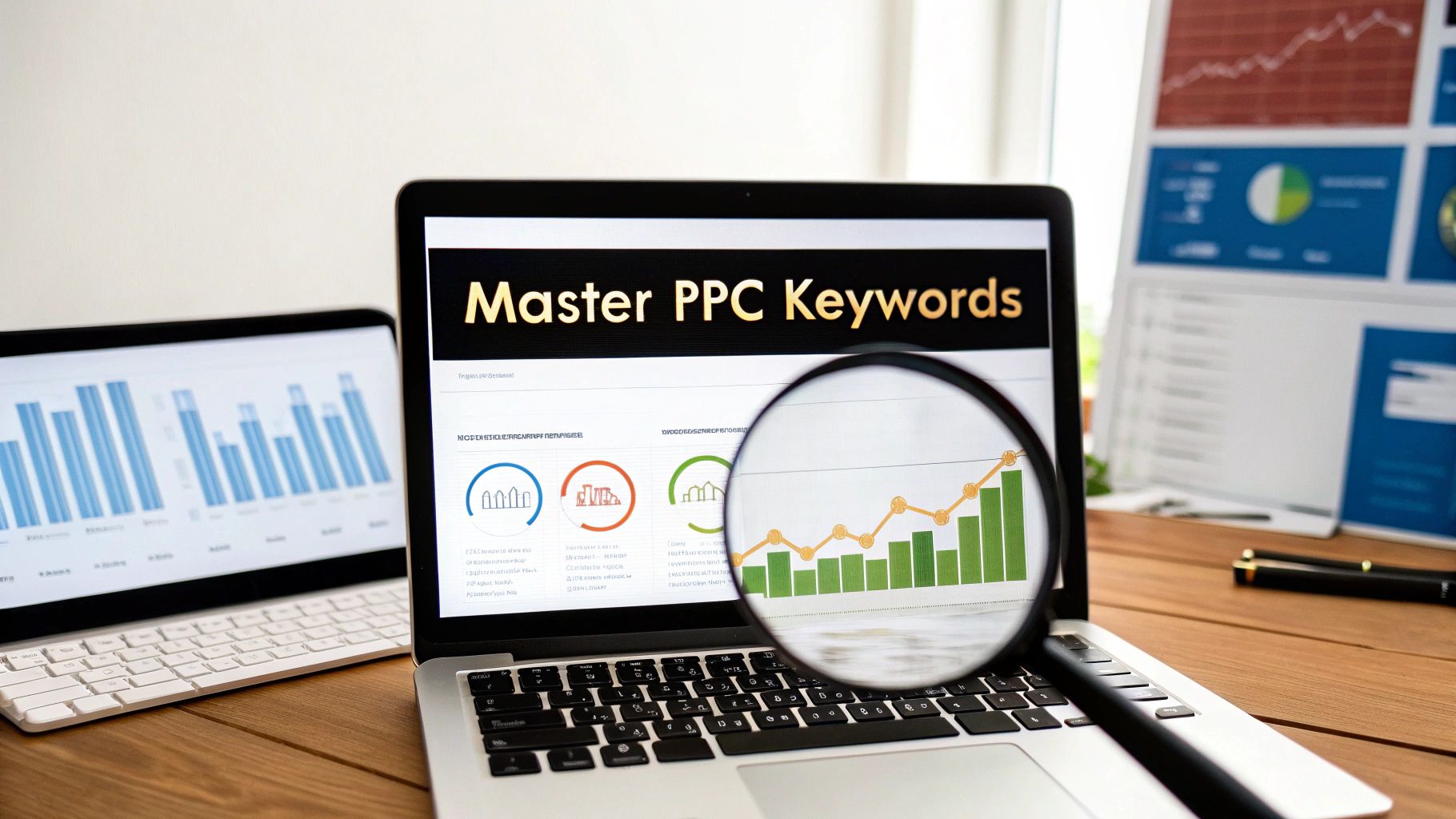
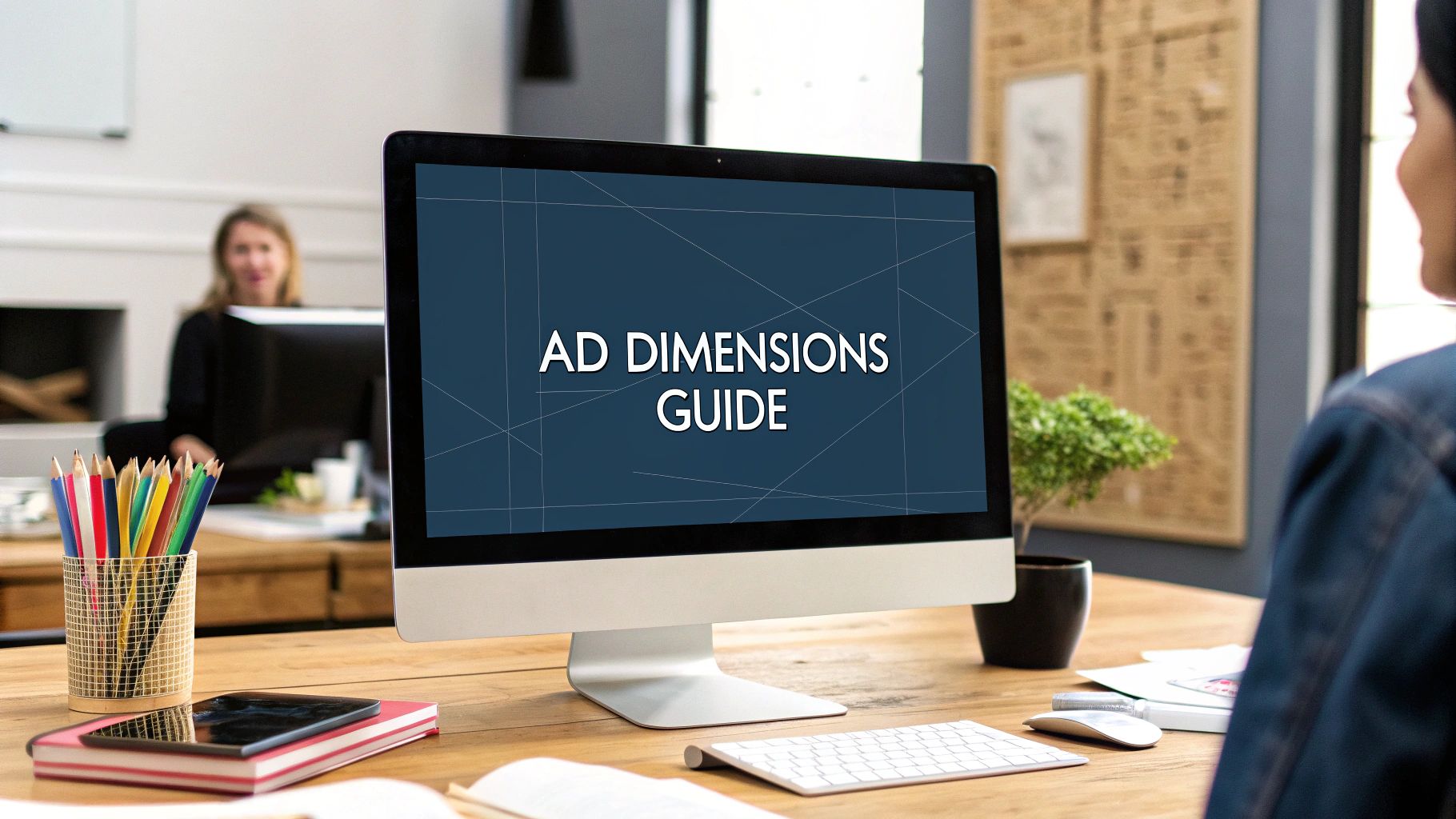
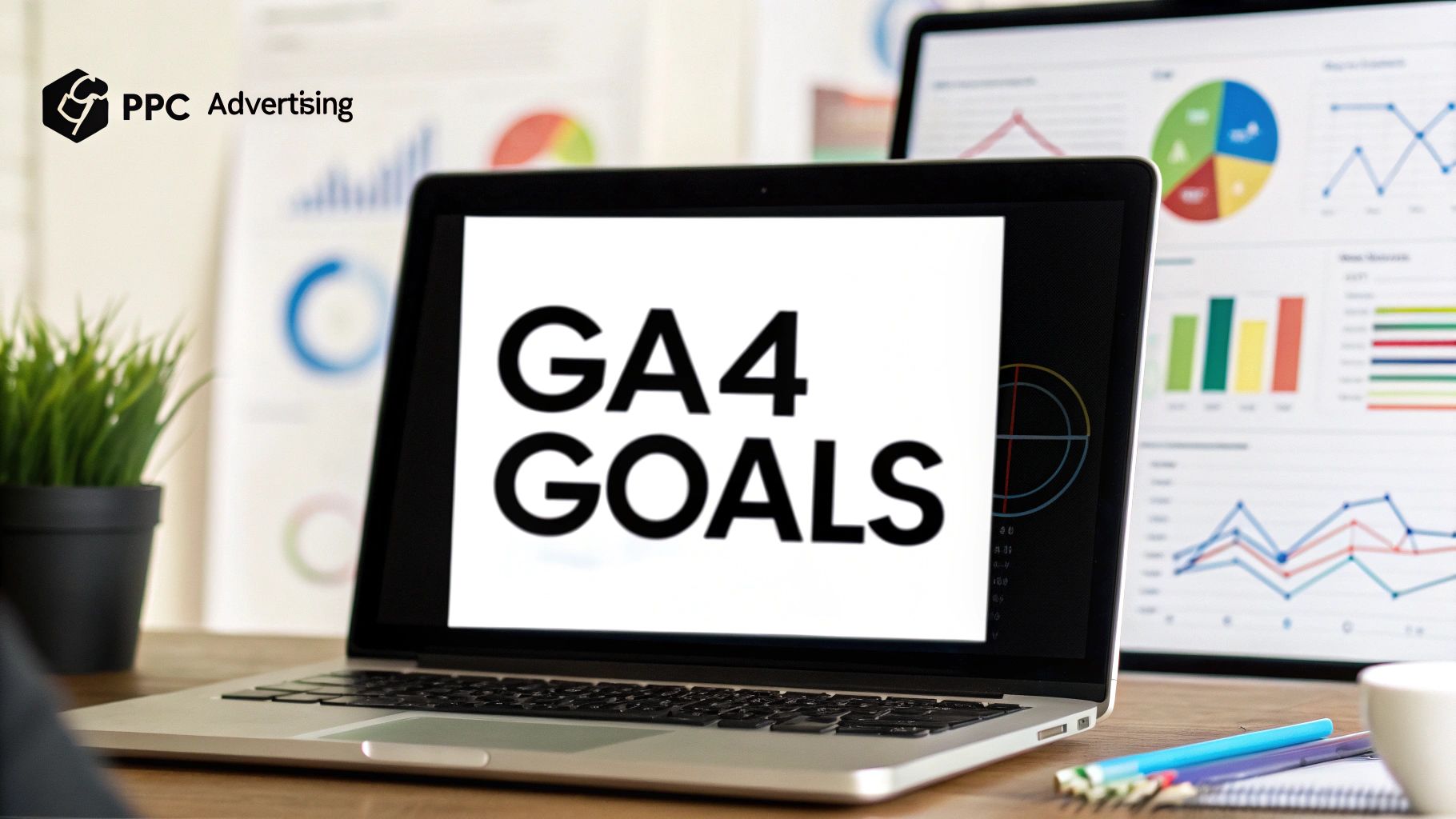
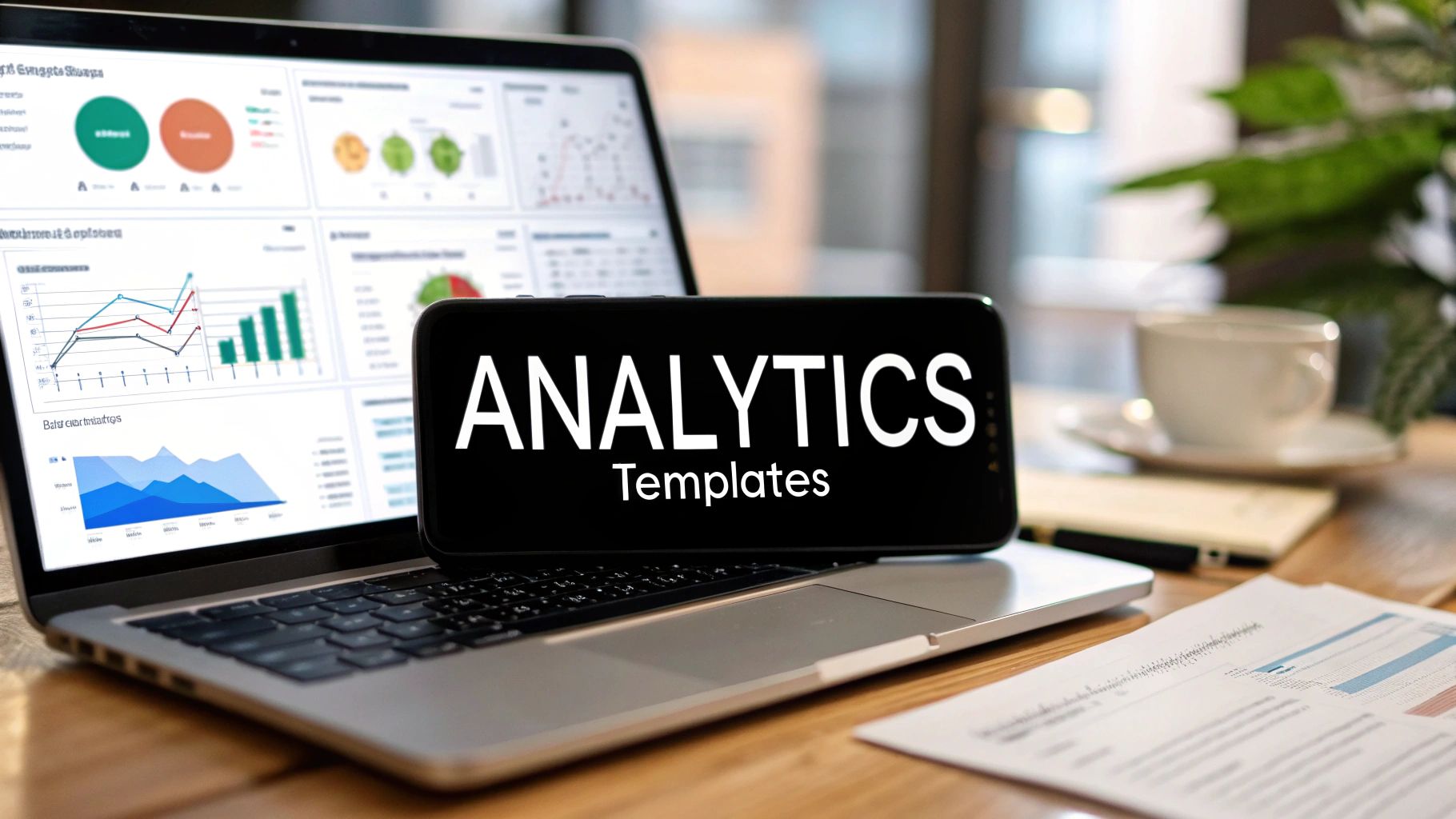
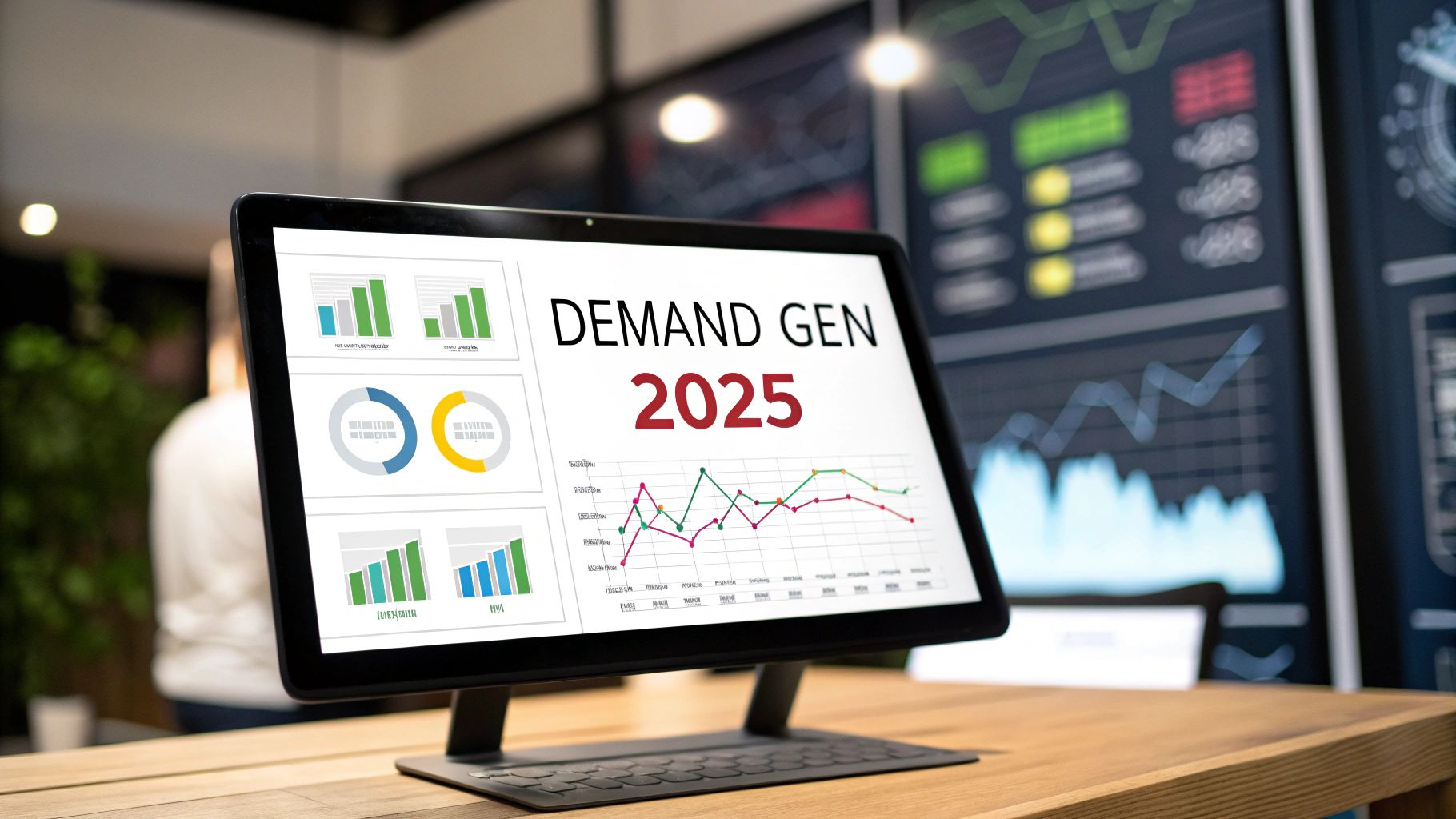
Comments